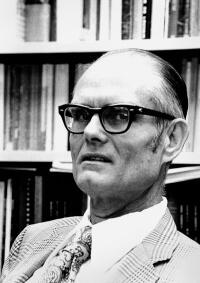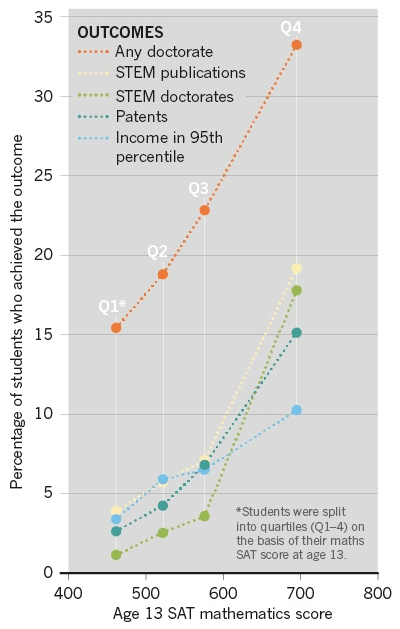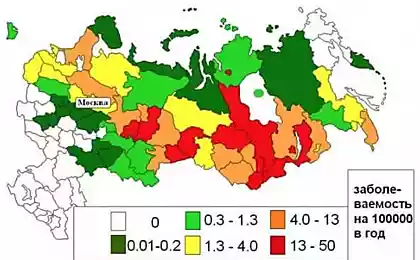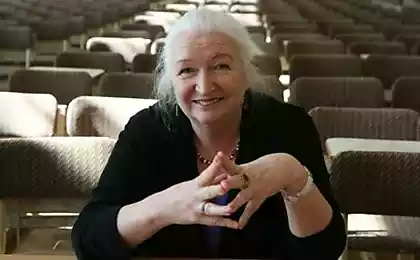628
A 45-year study of success in life, geeks
Many of the children whose results were included in the top 1% in the country on the math section of the SAT, has achieved some success in adult life. The pictures — three of those who went through the Hopkins center for gifted children in 1980-e and 1990-e years.
Went 45-year long-term experiment SMPY (Study of Mathematically Precocious Youth). Almost half a century, scientists closely study and record the achievements of 5,000 people at a young age showed the maximum score on a math test.

"Like it or not, but these people actually control our society, "says Jonathan Wai (Jonathan Wai), a psychologist from the program, identification of young talents of Duke University. — Guys who are in the top 1% on math test, tend to become outstanding scientists and academics, heads of major corporations, Federal judges, senators and billionaires." Of course, we are talking about the United States, where good is a social Elevator.
(Julian Stanley, pictured) from Johns Hopkins University began his long-term study in March 1972. For a start, he took 450 smart children aged 12-14 years who showed the best results in the mathematical part of the SAT test is a standardized test for admission to higher educational institutions in the United States.

The mathematical section of the SAT in three parts known as the Quantitative Section (Calculation Section). The 70-minute test includes mathematical analysis and work with charts. In the first part — 20 questions; the second is 8 questions answer multiple-choice and 10 questions with a complete writing the answer; the third part is 16 questions.
According to the journal Nature, it was the first standardized talent search in the country. Previous similar studies of the life fate of children with a high IQ was stopped after several children who in childhood rejected for a high enough IQ, later claimed the Nobel prize (for example, the inventor of the transistor William Shockley with an IQ of 129).
It became clear that IQ is not well correlated with success. As it turned out, math test SAT gives much better correlation. However, there is a more accurate method (described below).
Five years after testing the first children Professor Stanley expanded sampling and began to trace children from leaving school to University and moving up the career ladder.
Gradually, in the sample added new group of children, with the fifth group in 1992, their total number reached 5,000. According to the test methodology, further research is planned, when 12-14 year old children from the first four groups reach the age of 18, 23, 33, 50 and 65 years. For the last fifth group was have age markers of 35, 50 and 65 years.
This is probably the most extensive and rigorous in the world study the fate of young talents. The results will upset the parents whose children do not differ a brilliant mind. Unfortunately, breaking into the elite it will be much harder.
As in the case with athletes, the results probably refutes the myth that long-term practice (10,000 hours or more) will allow any average person to achieve outstanding results in the selected business and become the best. This is not so.
Natural ability is much more important than hard work and training. This also applies to sports, and scientific activities. Innate ability is not only the main factor of success in scientific activities, but also the only reliable indicator that can predict future success.
Now, when the first group of gifted children have reached the peak of his career, it became obvious how much these children surpass their achievements average.
Among those children who entered the top 1% of American children on the College SAT test, proved to be an outstanding mathematics Terence Tao and Mr. Leonard Eun, the founder of Facebook, mark Zuckerberg, founder of Google Sergey Brin, musician Stefani Germanotta (Lady Gaga). They went through the Hopkins center for gifted children.

The graph shows that the probability to obtain a doctoral degree to publish a scientific work, patent or high money income in the United States correlates with the result of the math SAT at age 13 years. Source: K. Ferriman Robertson et al. Curr. Dir. Psychol. Sci. 19, 346-351 (2010)
However, much to be upset about the difficult prospects in life will be the only us parents. In less developed countries, intelligence is not so much the determining factor in moving up the social ladder. This increases the chances of a mediocre but ambitious and hardworking children from more wealthy families with connections to rise to the highest positions.
Oddly enough, but the study authors noted an interesting phenomenon in the school system. It turns out that gifted children can be disadvantaged in the education system, which focuses on lagging and mediocre children. The results indicate that the best results were achieved by those gifted children are transferred at once through two classes up or who are given premature access to University learning materials.
For example, among gifted children, which was transferred through two classes (for example, from the 8th from the 10th) is 60% more likely to obtain a doctorate or a patent, than those gifted children, which moved in the progressive classes, instead of with the others.
The study authors explain that gifted children do not require some special attitude. They should just give the books more senior classes. While psychologists recommend to avoid classifying children into "gifted" and "ungifted", because it can reduce the motivation of children to make the effort to learn.
Social emotion: neurophysiology of envy and Schadenfreude
Cymatics: the Memory of water and the power of sound
The results of 45 years of research SMPY has published more than 400 scientific papers and made a lot of interesting insights. Researchers have traced many of the peculiarities and curious correlations that exist mathematically gifted children.
Among them is one detail. The best results are obtained by the number of patents and scientific papers that have passed peer-review, show those who in childhood was demonstrated on tests of visual-figurative thinking, i.e. the ability to manipulate in mind the two-, three - and four-dimensional objects. Success in this particular test gives the best correlation with future achievement than success in simple math SAT.published
Source: geektimes.ru/post/280254/
Went 45-year long-term experiment SMPY (Study of Mathematically Precocious Youth). Almost half a century, scientists closely study and record the achievements of 5,000 people at a young age showed the maximum score on a math test.

"Like it or not, but these people actually control our society, "says Jonathan Wai (Jonathan Wai), a psychologist from the program, identification of young talents of Duke University. — Guys who are in the top 1% on math test, tend to become outstanding scientists and academics, heads of major corporations, Federal judges, senators and billionaires." Of course, we are talking about the United States, where good is a social Elevator.
(Julian Stanley, pictured) from Johns Hopkins University began his long-term study in March 1972. For a start, he took 450 smart children aged 12-14 years who showed the best results in the mathematical part of the SAT test is a standardized test for admission to higher educational institutions in the United States.

The mathematical section of the SAT in three parts known as the Quantitative Section (Calculation Section). The 70-minute test includes mathematical analysis and work with charts. In the first part — 20 questions; the second is 8 questions answer multiple-choice and 10 questions with a complete writing the answer; the third part is 16 questions.
According to the journal Nature, it was the first standardized talent search in the country. Previous similar studies of the life fate of children with a high IQ was stopped after several children who in childhood rejected for a high enough IQ, later claimed the Nobel prize (for example, the inventor of the transistor William Shockley with an IQ of 129).
It became clear that IQ is not well correlated with success. As it turned out, math test SAT gives much better correlation. However, there is a more accurate method (described below).
Five years after testing the first children Professor Stanley expanded sampling and began to trace children from leaving school to University and moving up the career ladder.
Gradually, in the sample added new group of children, with the fifth group in 1992, their total number reached 5,000. According to the test methodology, further research is planned, when 12-14 year old children from the first four groups reach the age of 18, 23, 33, 50 and 65 years. For the last fifth group was have age markers of 35, 50 and 65 years.
This is probably the most extensive and rigorous in the world study the fate of young talents. The results will upset the parents whose children do not differ a brilliant mind. Unfortunately, breaking into the elite it will be much harder.
As in the case with athletes, the results probably refutes the myth that long-term practice (10,000 hours or more) will allow any average person to achieve outstanding results in the selected business and become the best. This is not so.
Natural ability is much more important than hard work and training. This also applies to sports, and scientific activities. Innate ability is not only the main factor of success in scientific activities, but also the only reliable indicator that can predict future success.
Now, when the first group of gifted children have reached the peak of his career, it became obvious how much these children surpass their achievements average.
Among those children who entered the top 1% of American children on the College SAT test, proved to be an outstanding mathematics Terence Tao and Mr. Leonard Eun, the founder of Facebook, mark Zuckerberg, founder of Google Sergey Brin, musician Stefani Germanotta (Lady Gaga). They went through the Hopkins center for gifted children.

The graph shows that the probability to obtain a doctoral degree to publish a scientific work, patent or high money income in the United States correlates with the result of the math SAT at age 13 years. Source: K. Ferriman Robertson et al. Curr. Dir. Psychol. Sci. 19, 346-351 (2010)
However, much to be upset about the difficult prospects in life will be the only us parents. In less developed countries, intelligence is not so much the determining factor in moving up the social ladder. This increases the chances of a mediocre but ambitious and hardworking children from more wealthy families with connections to rise to the highest positions.
Oddly enough, but the study authors noted an interesting phenomenon in the school system. It turns out that gifted children can be disadvantaged in the education system, which focuses on lagging and mediocre children. The results indicate that the best results were achieved by those gifted children are transferred at once through two classes up or who are given premature access to University learning materials.
For example, among gifted children, which was transferred through two classes (for example, from the 8th from the 10th) is 60% more likely to obtain a doctorate or a patent, than those gifted children, which moved in the progressive classes, instead of with the others.
The study authors explain that gifted children do not require some special attitude. They should just give the books more senior classes. While psychologists recommend to avoid classifying children into "gifted" and "ungifted", because it can reduce the motivation of children to make the effort to learn.
Social emotion: neurophysiology of envy and Schadenfreude
Cymatics: the Memory of water and the power of sound
The results of 45 years of research SMPY has published more than 400 scientific papers and made a lot of interesting insights. Researchers have traced many of the peculiarities and curious correlations that exist mathematically gifted children.
Among them is one detail. The best results are obtained by the number of patents and scientific papers that have passed peer-review, show those who in childhood was demonstrated on tests of visual-figurative thinking, i.e. the ability to manipulate in mind the two-, three - and four-dimensional objects. Success in this particular test gives the best correlation with future achievement than success in simple math SAT.published
Source: geektimes.ru/post/280254/























